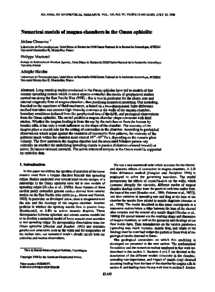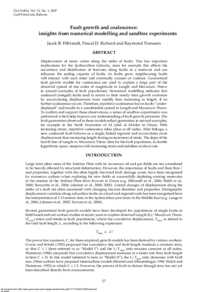Document
Numerical models of magma chambers in the Oman ophiolite.
Identifier
DOI: 10.1029/98jb00597
Source
Journal of Geophysical Research: Solid Earth. v. 103, 7, p. 15443-15455
Contributors
Macbetel, Philippe., Author
Nicolas, Adolphe., Author
Country
United Kingdom.
City
Oxford
Publisher
Blackwell Publishing Ltd.
Gregorian
1998-07-10
Language
English
Subject
English abstract
Long standing studies conducted in the Oman ophiolite have led to models of fast oceanic spreading centers which in some aspects contradict the results of geophysical studies carried out along the East Pacific Rise (EPR); this is true in particular for the shape, size and internal magmatic flow of magma chambers, thus justifying numerical modeling. Our modeling, founded on the equations of fluid mechanics, is based on a two-dimensional finite difference method that takes into account high viscosity contrasts at the walls of the magma chamber, boundary conditions deduced from the geophysical data of the EPR, and geological observations from the Oman ophiolite. The model predicts a magma chamber shape consistent with field studies. Whether the magma feeding is from the top by the melt lens or from the bottom by basaltic sills, it has only a weak influence on the shape of the chamber. The viscosity of the magma plays a crucial role for the setting of convection in the chamber. According to geological observations which argue against the existence of convective flow patterns, the viscosity of the gabbroic mush within the chamber must exceed 1014-1015 Pa s, depending on the oceanic plate velocity. The flow pattern in the magma chamber and the associated foliation pattern rely critically on whether the underlying upwelling mantle is passive (foliations oriented inward) or active (foliations oriented outward). The active structural analysis in the Oman model is supported by ophiolite data.
ISSN
2169-9313
Category
Journal articles


